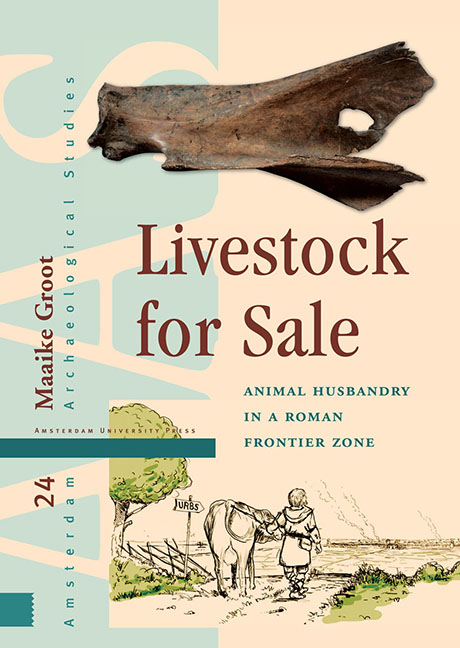Book contents
6 - Consumers: Urban, Military and Temple Sites
Published online by Cambridge University Press: 17 June 2021
Summary
This chapter discusses the zooarchaeological evidence from consumer sites. The term consumer site refers to any site where agrarian production is not the main activity. The assumption is that the consumer sites formed the market for any agrarian surplus produced in the rural sites discussed in chapter 5. Although consumer sites thus mainly provide information about consumption, they also provide indirect evidence for production in rural sites. At the same time, consumer sites also fulfilled a role in production, not so much of primary agrarian products, but of processed products, such as textiles, worked bone and horn, leather, grease and meat. Much of these products would have remained within the site itself, but some may have been traded back to the rural sites.
Consumer sites in the research area have been divided into four categories:
1. military sites: including a legionary fortress, castella, watchtowers and a military supply base.
2. urban/military sites: the canabae legionis in Nijmegen and vici adjacent to castella.
3. urban sites: there is only one urban centre in the research area, so all the urban data come from Nijmegen.
4. temples: including three rural temples and one urban temple.
This chapter is structured in the same way as the previous chapter, and will successively discuss taphonomy, species proportions, age and sex, skeletal elements, butchery, biometrics and archaeobotanical data. All these data will first be discussed for each type of consumer site; in the discussion the different types of site will be compared with each other.
TAPHONOMY
Taphonomy could only be investigated for five assemblages. The taphonomic index is similar, but the index of representativeness varies, with the assemblage from Nijmegen-Canisiuscollege being more representative than the other four (table E6.1). The average bone weight varies from 12 to 44 g.
MILITARY SITES
Despite the strong military presence along the river Rhine, there is a scarcity of animal bone data for military sites when compared to rural sites. In Nijmegen, we have data for the Augustan camp, an early castellum (Nijmegen-Trajanusplein), the Early Roman military camp on the Kops Plateau, the Flavian legionary fortress or castra on the Hunerberg, and the Late Roman castellum on the Valkhof. The only other castellum in the research area for which animal bones have been analysed is Meinerswijk.
- Type
- Chapter
- Information
- Livestock for SaleAnimal Husbandry in a Roman Frontier Zone, pp. 145 - 190Publisher: Amsterdam University PressPrint publication year: 2016



